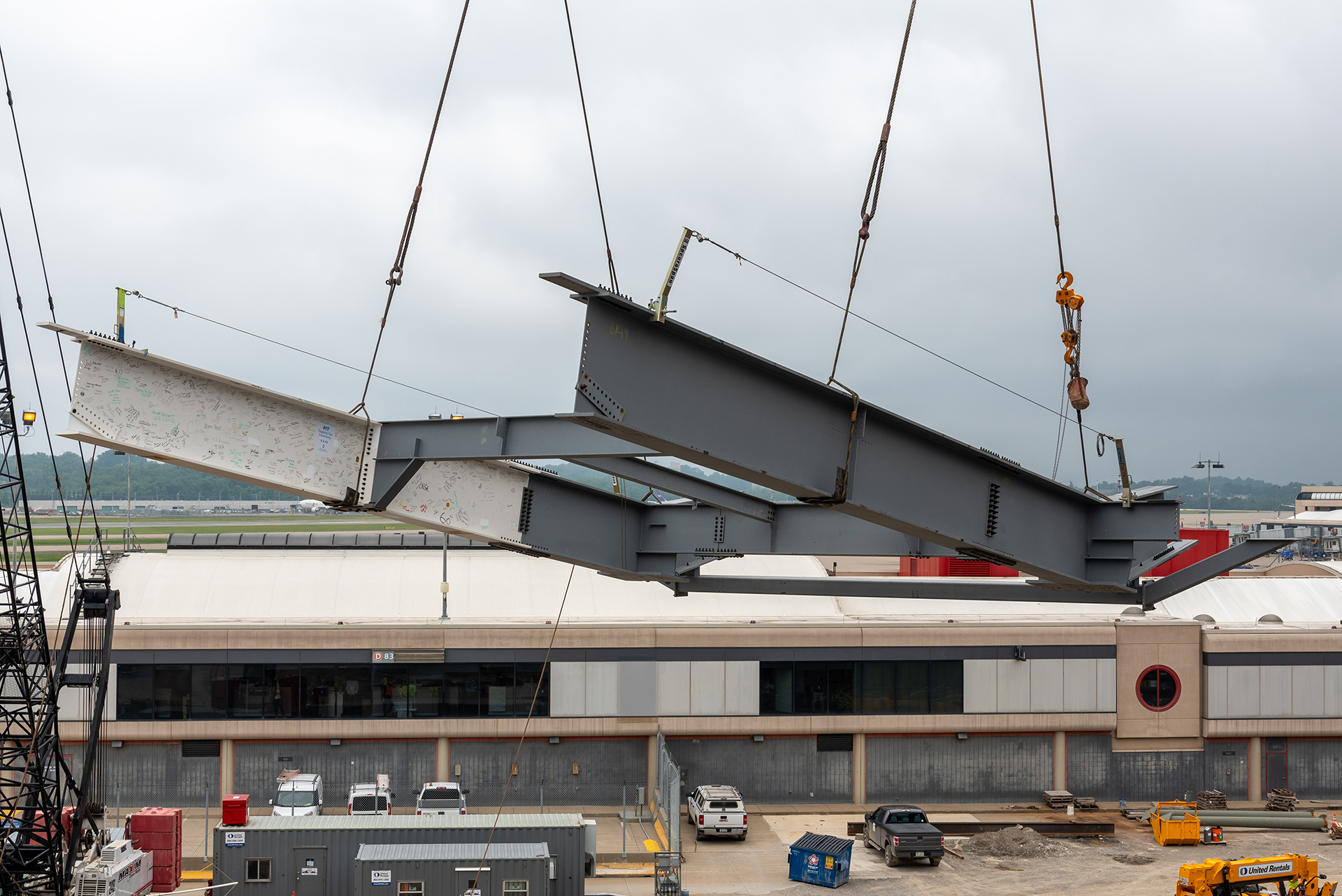Falcon’s Capture, Release a Feather in Airport’s Cap
PIT wildlife management team safely bands, relocates threatened bird
By Matt Neistein
Published January 25, 2021
Read Time: 2 mins
Every day, dozens of 50-ton jets that can fly more than 500 miles per hour land at Pittsburgh International Airport.
But it’s the world’s fastest animal—a 3-pound bird that can hit 240 mph—that really catches the attention of airport staff.
Earlier this month, with the help of the U.S. Department of Agriculture’s Wildlife Services division, the airport safely trapped and relocated a peregrine falcon that had been hanging around the airfield for a few days.
“Through the years we’ve seen them here, sporadically stopping, hunting pigeons around the terminal,” said PIT Wildlife Administrator Ben Shertzer. “They’ll feed for a little bit and then just move on.”
Birds present a potential threat to aircraft, which can be susceptible to events known as “bird strikes” that have been known to seriously damage planes in flight. So when airport staff spotted a migratory pair of peregrine falcons, they tried to scare them off.
But the falcons persisted, leading Shertzer and his counterparts at Wildlife Services to place traps in strategic locations around airport property.
They used Swedish goshawk traps, two-level cages with spring-loaded doors on top and a bait bird, such as a pigeon, inside the lower section. When the bird of prey swoops down to get the bait, it triggers the doors and is safely contained, but the hunter and pigeon remain separate from one another.
The team, which includes Wildlife Services biologist Nate Swigart and wildlife technician Tom Wilson, monitored the traps when they were set, with the goal of removing any caught animals as quickly as possible.
“It’s definitely a team effort,” said Craig Hicks, a district supervisor for Wildlife Services. “A lot of airports just have a Wildlife Services employee, but PIT is one of the few airports in the U.S. that actually has one of their employees assisting with the wildlife management program as well.
“It’s really helpful, because there are things that Ben can do on the airfield that we can’t, and vice versa.”
Among those assets is the USDA’s ability to work quickly with the Pennsylvania Game Commission to secure the permits necessary to trap falcons and band them.
After the falcon was secured, it was measured and given a health assessment, with all the collected data recorded for state and federal wildlife management agencies, including the U.S. Fish and Wildlife Service.
With a fresh band on her leg, the female raptor was released in an area about 55 miles south of the airport chosen by the game commission.
“When anybody looks at that band, they can track the bird back to PIT,” Shertzer said, adding that he believes it was the first peregrine falcon ever caught at the airport.
Peregrine falcons are on Pennsylvania’s Threatened and Endangered Species list, making this safe catch-and-release particularly satisfying.
“We’re out there first and foremost to protect the lives of the passengers on the airplanes, but our work obviously has a twofold benefit, and that’s protecting an endangered animal,” Hicks said.
Watch
This Next
Read
This Next





